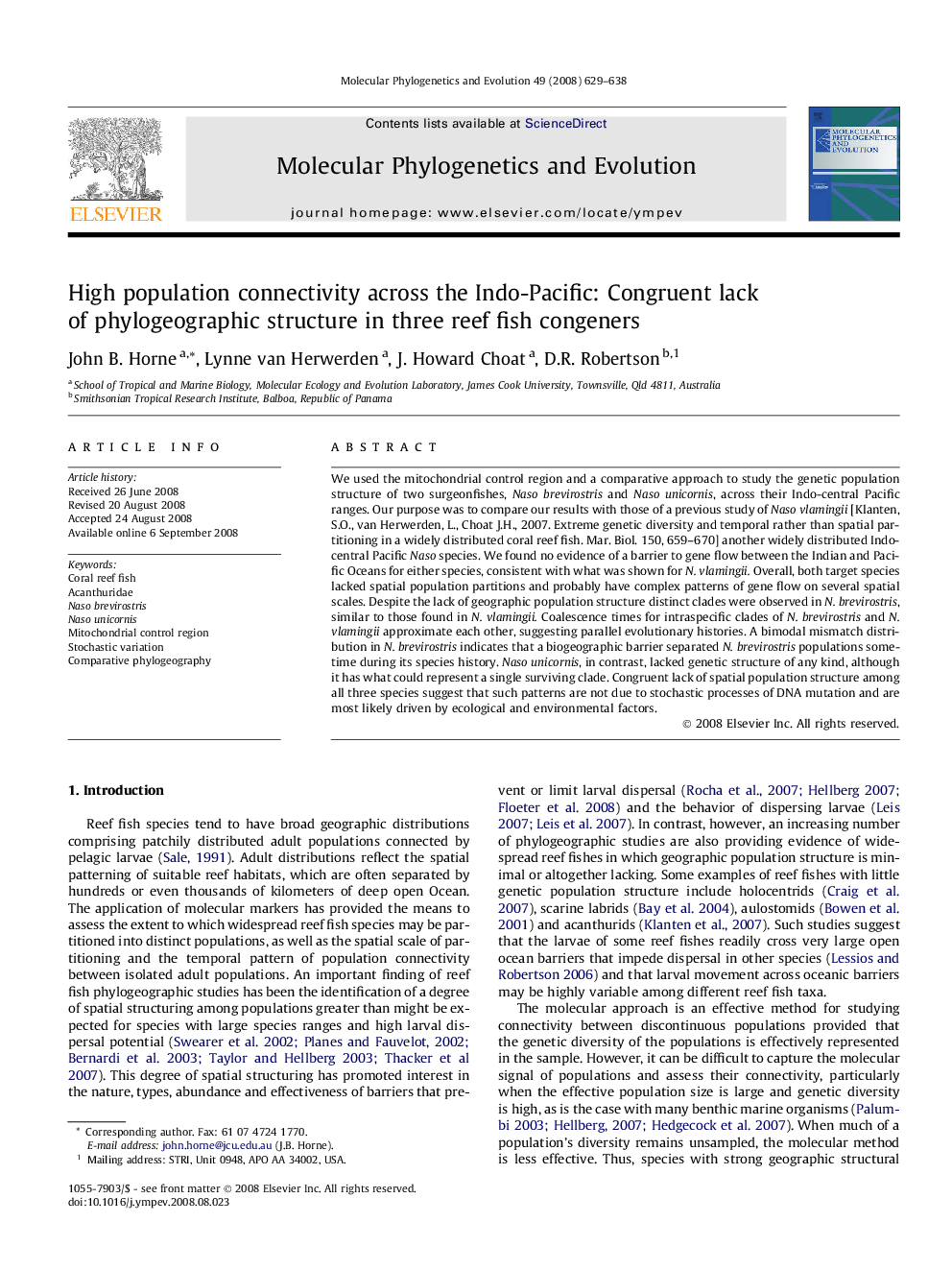| کد مقاله | کد نشریه | سال انتشار | مقاله انگلیسی | نسخه تمام متن |
|---|---|---|---|---|
| 2835129 | 1164333 | 2008 | 10 صفحه PDF | دانلود رایگان |

We used the mitochondrial control region and a comparative approach to study the genetic population structure of two surgeonfishes, Naso brevirostris and Naso unicornis, across their Indo-central Pacific ranges. Our purpose was to compare our results with those of a previous study of Naso vlamingii [Klanten, S.O., van Herwerden, L., Choat J.H., 2007. Extreme genetic diversity and temporal rather than spatial partitioning in a widely distributed coral reef fish. Mar. Biol. 150, 659–670] another widely distributed Indo-central Pacific Naso species. We found no evidence of a barrier to gene flow between the Indian and Pacific Oceans for either species, consistent with what was shown for N. vlamingii. Overall, both target species lacked spatial population partitions and probably have complex patterns of gene flow on several spatial scales. Despite the lack of geographic population structure distinct clades were observed in N. brevirostris, similar to those found in N. vlamingii. Coalescence times for intraspecific clades of N. brevirostris and N. vlamingii approximate each other, suggesting parallel evolutionary histories. A bimodal mismatch distribution in N. brevirostris indicates that a biogeographic barrier separated N. brevirostris populations sometime during its species history. Naso unicornis, in contrast, lacked genetic structure of any kind, although it has what could represent a single surviving clade. Congruent lack of spatial population structure among all three species suggest that such patterns are not due to stochastic processes of DNA mutation and are most likely driven by ecological and environmental factors.
Journal: Molecular Phylogenetics and Evolution - Volume 49, Issue 2, November 2008, Pages 629–638